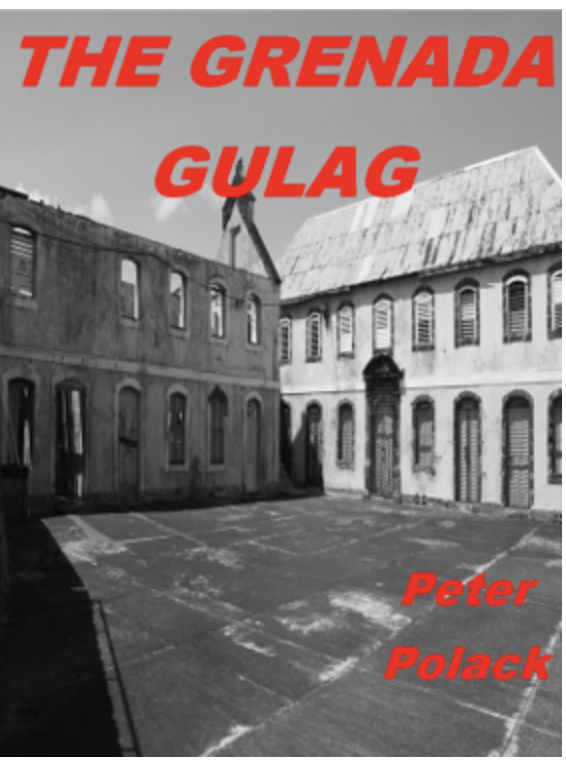40th Anniversary Grenada Invasion October 2023 – The Grenada Gulag

By Peter Polack
GRENADA – The island of Grenada is best known worldwide for two things: nutmeg and revolution. Nutmeg has several interesting characteristics which were revealed in the events surrounding the revolution. The sex of the nutmeg cannot be determined until it flowers several years after it is planted, a remarkable similarity to the ideology of many who only exposed their inner selves in the fullness of time.
The excessive consumption of nutmeg can lead to hallucinations in the very young or feeble minded. Finally, nutmeg is not native to Grenada but originated from the Banda Islands which had an earlier history of colonization and massacre. To be clear, modern-day massacres of groups of government officials or coups are not part of the common history or culture of Caribbean islands.
The irresistible conclusion is that such behavior was imported like the black sigatoka banana disease that originated in Fiji.
Grenada and several smaller islands lie in the southern part of the Eastern Caribbean and are considered part of the Windward Islands. This name Windward comes from the era of sailing vessels arriving from Africa during the slave trade to the Caribbean. These islands were to “windward” of the ship whilst those to the north were to “leeward”. There is a school of thought that the best-behaved slaves were left at the first ports of call in the eastern Caribbean and those less pliable were sold off in Jamaica to the west as they returned home.
This theory has some significance with the disproportionate number of Jamaicans involved in the Grenada revolution hierarchy such as Phyllis Coard, Langston Sibblies and Richard Hart. The Grenada revolution came about on 13 March 1979 when the leader of the New Jewel Movement overthrew the elected government of the tyrant Eric Gairy while he was off island. Several members of the Movement were subsequently incarcerated after the revolution, prominent among them, former Attorney-General Lloyd Noel.
Maurice Bishop stated in a 5 June 1983 report by Bernard Nossiter of the New York Times that: “his government had jailed up to forty people without charge or trial”. He went on to explain the lack of charges by stating that the preferment of charges required: “the collection, preparation and organization of evidence”. Bishop accused Noel of being corrupt while Lloyd’s friends stated his detention came about after Noel had urged free elections, freedom of the press and civil rights.
At the time of Bishop’s response it was likely that several hundred persons had been detained. In the Nossiter report, Amnesty International had stated that there were 110 detainees. An undated memorandum from Miles Fitzpatrick to Bishop believed to be about April 1981 puts the number of detainees at over 200 in Richmond Hill prison alone. The detainee figure put forward was a clear lie by Bishop to the international press. That memorandum went on to state that: “the overcrowding at Richmond Hill has become grave, leading to serious deterioration in conditions at the prison” and “There are 5 persons to a cell in some places and water facilities are inadequate”.
That document noted the most important fact: “Langston Sibblies indicates that although a substantial number of detainees have been charged, the process of investigation and charging will not apply to many of these remaining as the nature of the evidence is such that it cannot be put before the court”.
If this document is accurate, Sibblies was acting in some capacity with the People’s Revolutionary Government of Grenada in regards to detainees prior to his formal appointment as Director of Public Prosecutions on 15 May 1981.
Sibblies stated in November 2013 that he had no comment when this incriminating document was revealed to him. Ironically, the Cayman Islands where Sibblies, a former chairman of the Law Reform Commission, now resides, recently amended its laws to allow an adverse inference to be drawn when an accused person chooses to remain silent.
Of the over 200 detainees only 34 were before the court.
Lloyd Noel remained incarcerated at the Richmond Hill prison from July 1981 until the US invasion on 25 October 1983. At the time of his imprisonment without trial or charge two persons were exclusively in charge of the detention of persons in Grenada, Maurice Bishop and Langston Sibblies. This was confirmed by a memorandum dated 26 January 1982 from DPP Sibblies to Bishop that provided a status report on a few detainees.
Biography
Peter Polack was a former criminal lawyer in the Cayman Islands for several decades. He is the author of The Last Hot Battle of the Cold War: South Africa vs. Cuba in the Angolan Civil War (2013), Jamaica, The Land of Film(2017) and Guerrilla Warfare: Kings of Revolution (2018). He was a contributor to Encyclopedia of Warfare (2013) and worked as a part-time reporter for Reuters News Agency in the Cayman Islands 2014-19 but now lives in Canada. His work has been published in Small Wars Journal, Defence Procurement International, American Intelligence Journal, U.S. Army John F. Kennedy Special Warfare Center magazine, Military Times, Foreign Policy News, EU Today, Radio Free Europe, VOA Portuguese, South Africa Times, History Cooperative, INews Cayman, Jamaica Gleaner, Miami Herald, Reuters, Toronto Star and The New York Times. His latest book entitled Soviet Spies Worldwide: Country by Country, 1940–1988 will be published by McFarland. He is presently researching his next book The Grenada Gulag.





